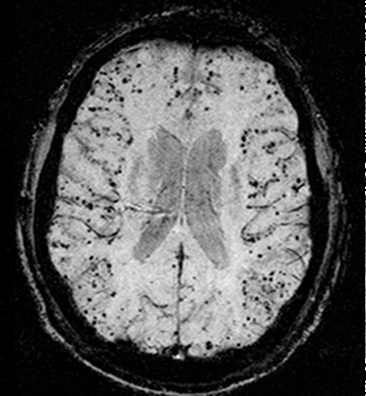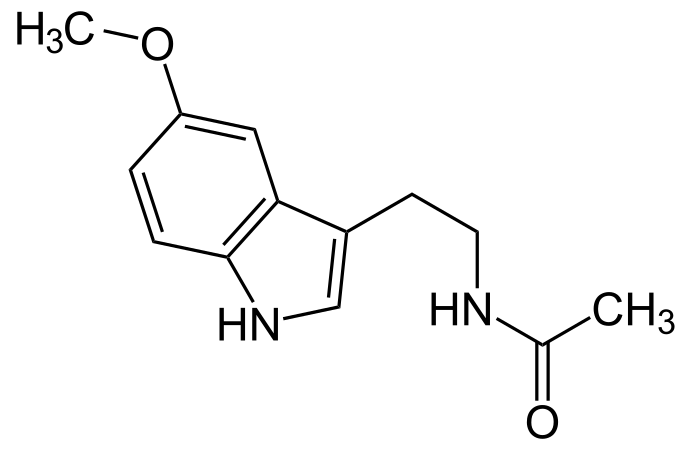

Implications of the role sphingosine kinase 1 plays in the formation of tumors in p53 knockout mice
Author: Marie Collison ‘25 Cancer is a universally known disease that can be caused by a variety of defects in the genetic code of cells. A very important molecule in the regulation of cellular proliferation is the tumor suppressor protein 53, more commonly known as p53. Mutations or deletions in the p53 gene sequence are detected in the majority of cancers, including several subtypes of … Continue reading Implications of the role sphingosine kinase 1 plays in the formation of tumors in p53 knockout mice

Diminished Glymphatic Transport and Lymphatic Drainage Tied to Cerebral Amyloid Angiopathy
Author: Vignesh Subramanian, Class of 2024 Cerebral amyloid angiopathy (CAA) is a cerebrovascular disorder characterized by the accumulation of amyloid protein deposits along cortical capillaries, cerebral vessel walls, and the brain’s leptomeninges. These plaques weaken fragile blood vessels, often resulting in intracerebral hemorrhaging. CAA is linked to vascular cognitive impairment and dysfunction and is a major contributor to the pathogenesis of Alzheimer’s disease (AD) and … Continue reading Diminished Glymphatic Transport and Lymphatic Drainage Tied to Cerebral Amyloid Angiopathy

Humans Remain Behaviorally Responsive to External Auditory Stimuli During Deep Sleep
Author: Vignesh Subramanian, Class of 2024 It has long been assumed that sleep is a stable state of unconsciousness in which an individual cannot perceive and respond to most external stimuli. However, recent studies have indicated that humans can process information, discriminate between basic sensations, and carry out limited executive functions, such as answering yes–no questions, while still asleep. Some oneirological studies have focused on … Continue reading Humans Remain Behaviorally Responsive to External Auditory Stimuli During Deep Sleep

Exploring the Therapeutic Potential of Melatonin in Endometriosis Management
Author: Kimberly Johnston ’26 Endometriosis is defined by the growth of endometrial tissue outside the uterus where it does not belong. It occurs in about 10% of women of reproductive age and leads to chronic pelvic pain and infertility. Despite the prevalence of this disease, its cause remains unknown. While there is no known cure to endometriosis, there are methods of symptom management, including hormone … Continue reading Exploring the Therapeutic Potential of Melatonin in Endometriosis Management

Exploring Drug Repurposing for Lacunar Stroke Prevention
Author: Kimberly Johnston ’26 Drug repurposing is a strategy that aims to find new applications for drugs that have already been proven safe and effective in humans. Lacunar stroke, characterized by reduced blood flow to the deep structures of the brain, can significantly impair a person’s movement, speech, and cognitive functions. Preventative treatments typically focus on managing hypertension, diabetes, and high cholesterol as these conditions … Continue reading Exploring Drug Repurposing for Lacunar Stroke Prevention

Combined Personological and Motivational Correlates Drive Conspiratorial Ideation
Author: Vignesh Subramanian, Class of 2024 Figure 1: Heightened paranoia and feelings of antagonism towards others are among the strongest indicators of conspiratorial ideation. Conspiracy theories are generally unsubstantiated explanations for specific events or circumstances that attribute said events to powerful individuals or groups secretly working in tandem. It remains disputed that either the number of conspiracy theories or the extent of public belief in … Continue reading Combined Personological and Motivational Correlates Drive Conspiratorial Ideation

Epigenetic Age Acceleration More Accurately Predicts Memory Decline Than Chronological Age
Author: Vignesh Subramanian, Class of 2024 Figure 1: Increasing evidence suggests biological aging, measured by examining the extent of methylation of cells’ DNA, is a stronger predictor of diminishing cognitive abilities than chronological age. Title: Epigenetic Age Acceleration More Accurately Predicts Memory Decline Than Chronological Age Age acceleration is the term used to describe the difference between an individual’s chronological age, the length of time … Continue reading Epigenetic Age Acceleration More Accurately Predicts Memory Decline Than Chronological Age

Novel Therapeutic Insights to Barth Syndrome
Author: Sean Krivitsky ‘26 Barth syndrome is a rare, severe genetic disorder that primarily affects muscle development and the heart’s ability to efficiently pump blood. It is most common in males given that it is an X-linked disorder and it is known to significantly reduce life expectancy. Despite the severity of Barth syndrome, there are limited therapies available to treat this disease. This condition is … Continue reading Novel Therapeutic Insights to Barth Syndrome

EN1 Protein Has Been Recognized as Playing a Key Role in Pancreatic Cancer
Author: Sean Krivitsky ‘26 Pancreatic cancer stands out as one of the most severe forms of cancer, accounting for the third most cancer-related deaths. Pancreatic ductal adenocarcinoma (PDA) is a form of pancreatic cancer that involves a high degree of metastasis, which refers to the ability of the cancer to spread. This cancer develops as a result of mutations that result in the activation of … Continue reading EN1 Protein Has Been Recognized as Playing a Key Role in Pancreatic Cancer

Cranial Windows Enable Transcranial Ultrasound Imaging of CSF Disorders
Vignesh Subramanian ’24 Figure 1: A CT scan of a human brain with hydrocephalus, made visible by the enlarged ventricles. Hydrocephalus is a neurological disorder characterized by the abnormal accumulation of cerebrospinal fluid (CSF), the plasma fluid in which the brain is suspended and cushioned, in cavities of the brain known as ventricles. CSF disorders like hydrocephalus develop when CSF is either excessively produced or … Continue reading Cranial Windows Enable Transcranial Ultrasound Imaging of CSF Disorders
Promoters of Neurodegeneration in ALS
Sean Krivitsky ‘27 Figure 1. Drosophila melanogaster was used by the Dubnau lab as a model organism to characterize TDP-43 pathology in ALS. TAR-DNA-Binding protein (TDP-43) is an alternative splicing factor that, upon abnormal phosphorylation, can become mislocalized and aggregate in cells. This has been identified as a potential mechanism for the development of impactful neurodegenerative diseases such as amyotrophic lateral sclerosis (ALS), frontotemporal dementia … Continue reading Promoters of Neurodegeneration in ALS

Developing Antibodies to Combat Cancer
Sean Krivitsky ‘27 Figure 1. Antibodies traveling through the bloodstream. Protein tyrosine phosphorylation is a reversible process in which a phosphate group can be added or removed from tyrosine residues of various proteins by protein tyrosine kinases (PTKs) and protein tyrosine phosphatases (PTPs), respectively. This type of post-translational modification is responsible for regulating many signal transduction pathways in the cell. The activity of a specific … Continue reading Developing Antibodies to Combat Cancer


